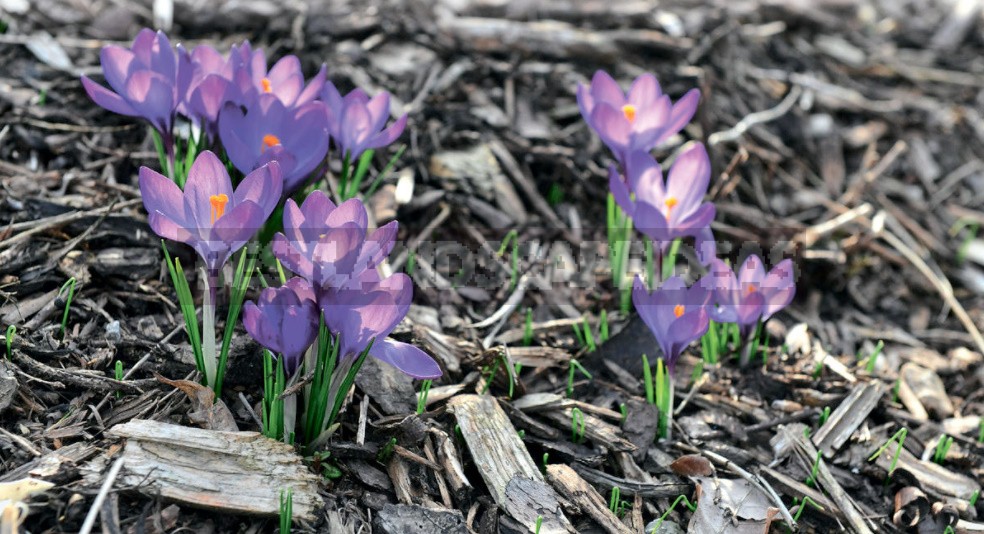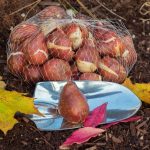Crocuses are among the first to appear in the garden and color the bare, sometimes still snow-covered ground with long-awaited bright colors. And-they bring the arrival of spring closer.
Portrait of a plant
Today, more than 80 species of crocuses are known. The conditions of their growth vary greatly: from north-west Africa through Europe and the Middle East to China. Therefore, let’s talk about the most popular-blooming in spring.
- They appear even in the snow, at the end of March — April; they are not afraid of frosts up to-7C.
- Flowering lasts about three weeks.
- Every year, a new corm develops, located on top of the old one, as well as children — daughter corms. The leaves, which greatly increase in size after the end of spring flowering, nourish the new corm and allow you to collect the necessary reserves for flowering.
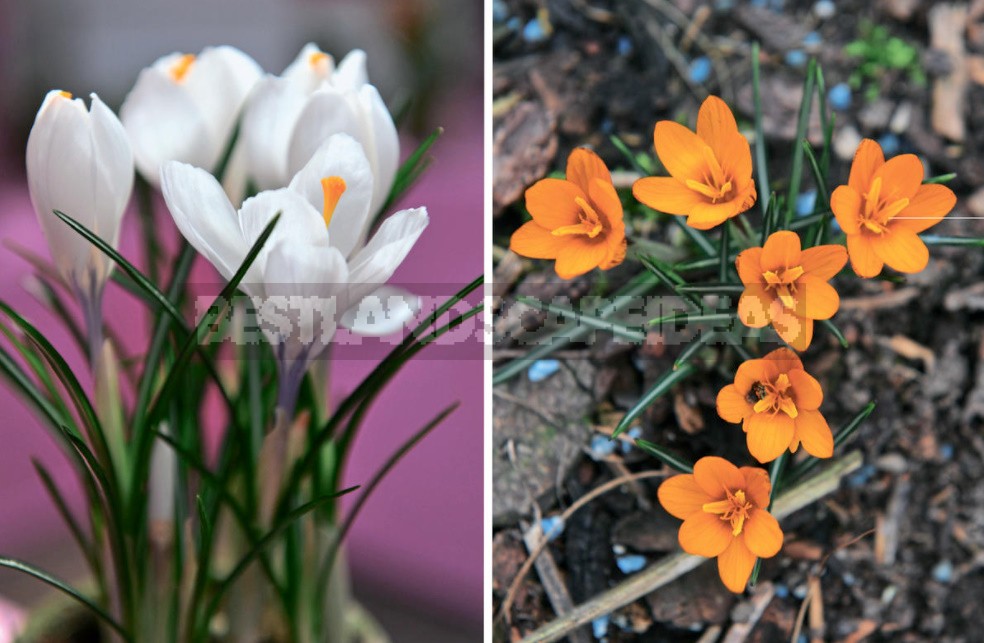
Crocus vernus has a huge number of cultivars, and some of them grow quite quickly. Its large-flowered varieties and hybrids were called “Dutch crocuses”.
Crocus flavus has orange flowers, which are often decorated with purple stripes on the outside of the petals.
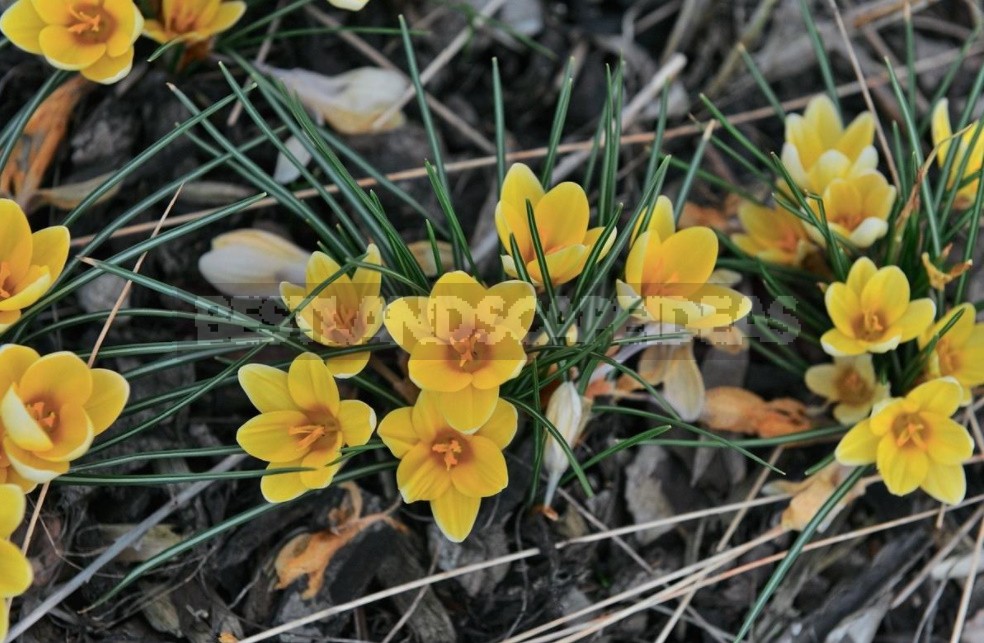
Crocus chrysanthus is one of the smallest and earliest crocuses. There are many hybrids with the coloring of flowers in pastel colors.
Crocus tommasinianus is another popular spring-flowering crocus that grows very quickly.
Optimal conditions
Crocuses are quite unpretentious to soils, but in areas with poor sandy acidic soils, they will practically not grow.
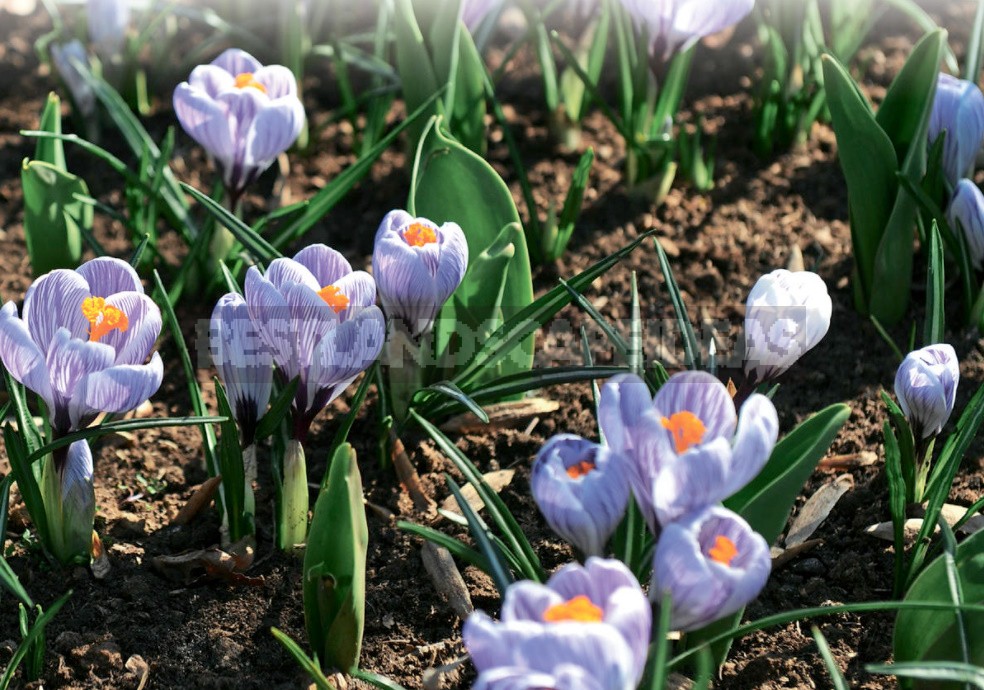
In any case, good drainage is very important. Crocuses prefer full sun. And although many of them bloom in partial shade, they need at least 4 hours of direct sunlight daily. In shading, as well as in cloudy weather, the flowers of crocuses do not open.
Reproduction
Already four years after planting, the nests of crocuses grow strongly, and the plants bloom worse. Therefore, it is better to plant crocuses in flower beds annually or every two years.
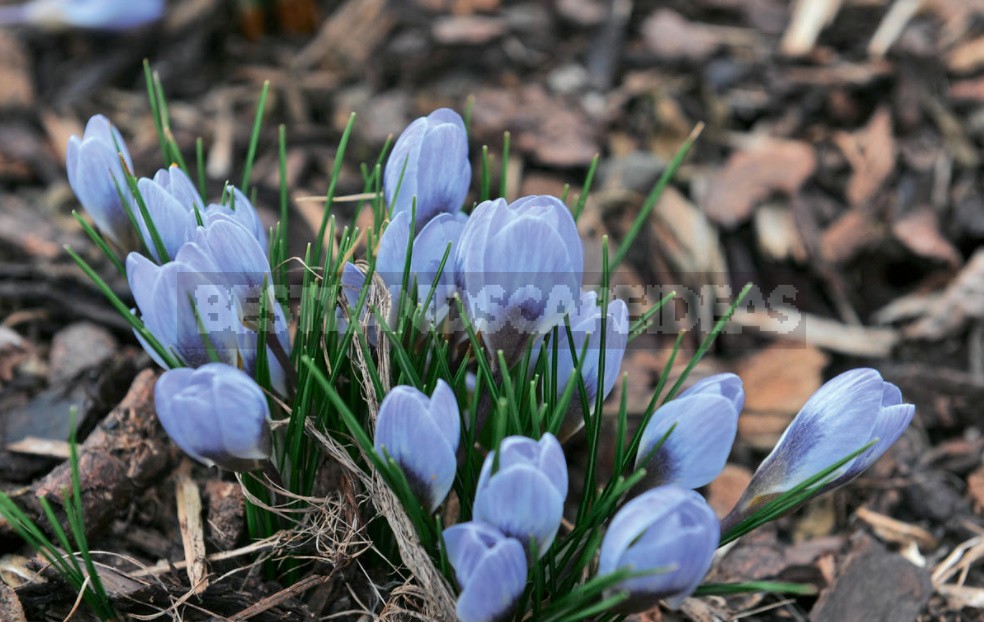
The signal for digging out corms is completely dried leaves. Corms dug up ahead of time are more susceptible to mummification. Moreover, if you hurry up with digging, it will be more difficult for you to clean the new corm from the remnants of the old one: it is very easy to damage the base, which almost always leads to the death of the plant. If you still had to dig up the crocuses before the foliage finally died off, then you should put them in a box, sprinkle with earth and put them in a dry, shady place until the foliage dries completely.
Important: you can not water such crocuses – the corms can rot.
The optimal temperature for storing excavated crocuses is +17°C. At higher temperatures, the probability of mummification increases, at lower temperatures, roots begin to grow, and this will complicate planting. Annually formed babies allow you to quickly get a stock of planting material. They are grown to a suitable size for flowering on the distribution ridges.
Care during the season
Spring
We are enjoying the flowering of crocuses.
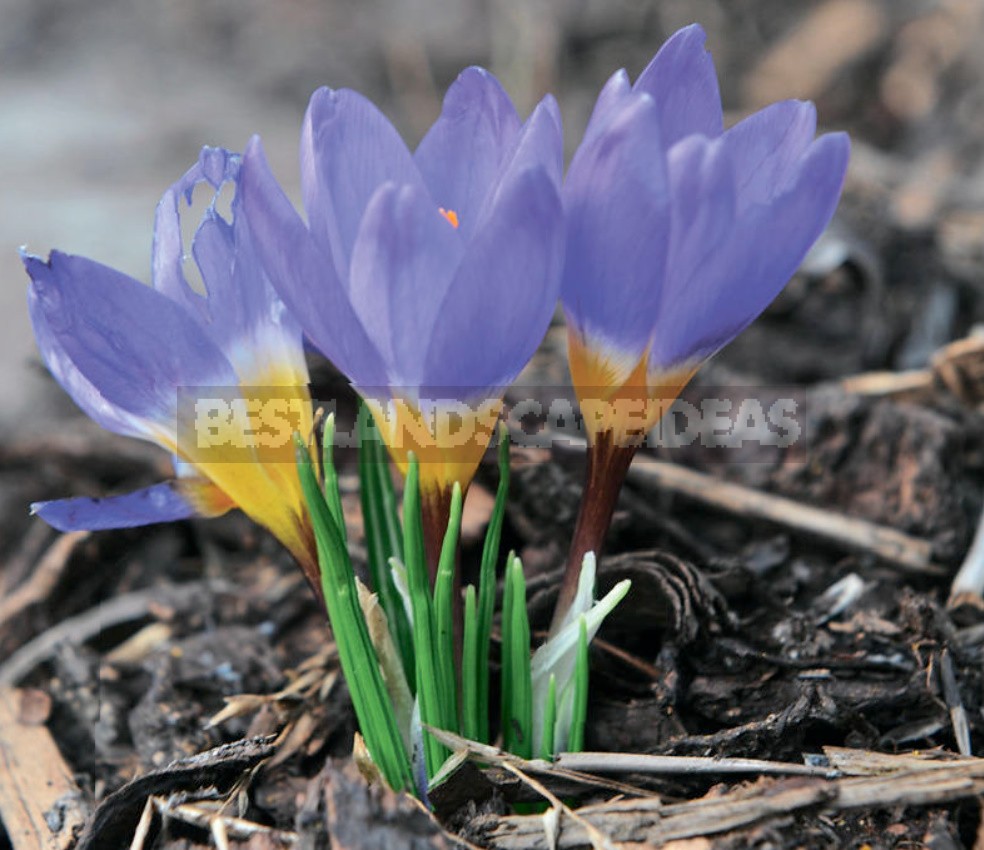
Summer
Crocuses are sold in the form of dormant corms from the end of summer. In the middle zone, the best time for planting most spring — flowering crocuses is late summer: they will take root perfectly and will bloom luxuriantly.
When planting crocuses, the corms are placed at a distance of about 10-15 cm from each other, depending on the desired effect.
- If you do not want to dig up and transplant crocuses every year, plant them deeper; they will form large corms and give fewer babies.
- If you want to get more small corms, plant crocuses shallowly.
- If you are mulching crocuses, the thickness of the mulch layer should also be taken into account. Mulch helps to retain moisture in the soil and protects crocuses from frost in snowless winters, and also prevents flowers from getting dirty in the ground during rain.
Autumn
Planting in the second half of September is possible, but it will reduce the quality of flowering. Crocuses planted later will not have time to form a strong root system, and in the spring their flowers will not be able to reach the surface of the earth.
Problems and solutions
If crocuses have suffered from frosts in a snowless winter, do not rush to dig them out. It is quite possible that only the most sensitive parts of the plant – the roots and bases of the corms-are damaged. In this case, the reserves of nutrients of the old corm will be enough to form a small replacement new one. It will take 2-3 years to reach the size at which it will bloom.
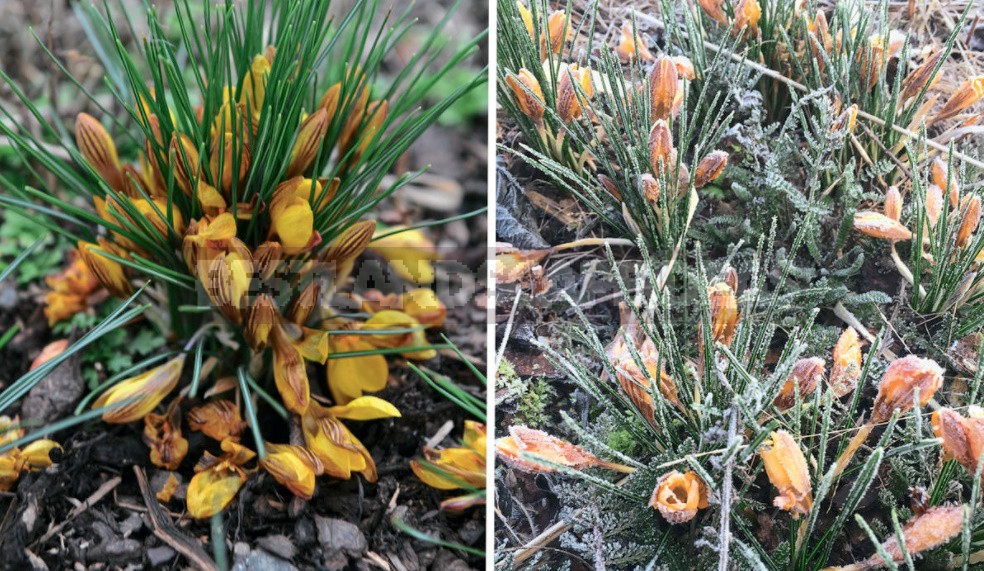
Crocuses are susceptible to numerous bacterial and fungal diseases, so the corms should be examined for lesions before planting, having cleaned them from the shells (this will not damage the plant) and etched with fungicides. Diseased corms should be destroyed.
Of the pests, the biggest enemy of crocuses is mice. It makes sense to always divide the stock of corms of each taxon into at least two groups (even with a small number of them) and plant them in different places. This will increase the probability of preserving crocuses when attacked by rodents.
In garden design
On the lawn, the naturalization of crocuses is impossible, but on the lawn, which can be mowed later, it is quite possible. To do this, remove the turf to a depth of 15 cm, loosen the soil, place the corms at a distance of 2.5 cm from each other, and then cover with turf again. Crocus vernus and Crocus tommasinianus are the easiest to naturalize. The first time is mowed at the end of June, when the leaves die off and the seeds are sifted out. If self-seeding is not needed, then Crocus tommasinianus is also good because its leaves are spread out on the ground surface, and you can start mowing earlier – the mower will not hurt them.
Crocuses are a popular culture for forcing. They are often grown in flat bowls, but they will feel better in pots of normal height. For these purposes, you can use a purchased substrate.
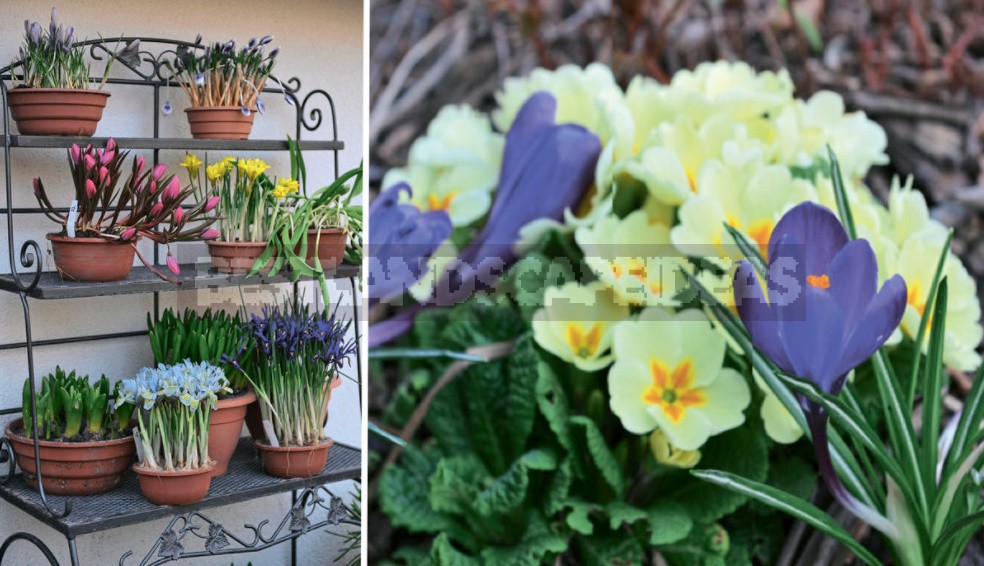
To achieve flowering in January, you need to plant corms in early September; in February-in early October.
- 6 corms are enough for a pot with a diameter of 15 cm. They are planted so that they do not touch either each other or the walls of the pot.
- Then they are covered with a layer of substrate no more than 2.5 cm thick, watered and put in the refrigerator (+4°C).
- After 2.5-3 months, when the sprouts reach 2-3 cm in height, the pot is placed on the windowsill. With moderate watering, crocuses will bloom in half a month.
- The corms remaining after the distillation can be planted in the fall in flower beds; next spring they will not shine with spectacular flowering, but in a couple of years they will please.
The best neighbors of crocuses in flower beds are hosts and herbaceous peonies, which gain strength just when the crocuses retire. And for a joint spring exhibition, you can plant crocuses with Corydalis, Helleborus and early-flowering bulbous ones.
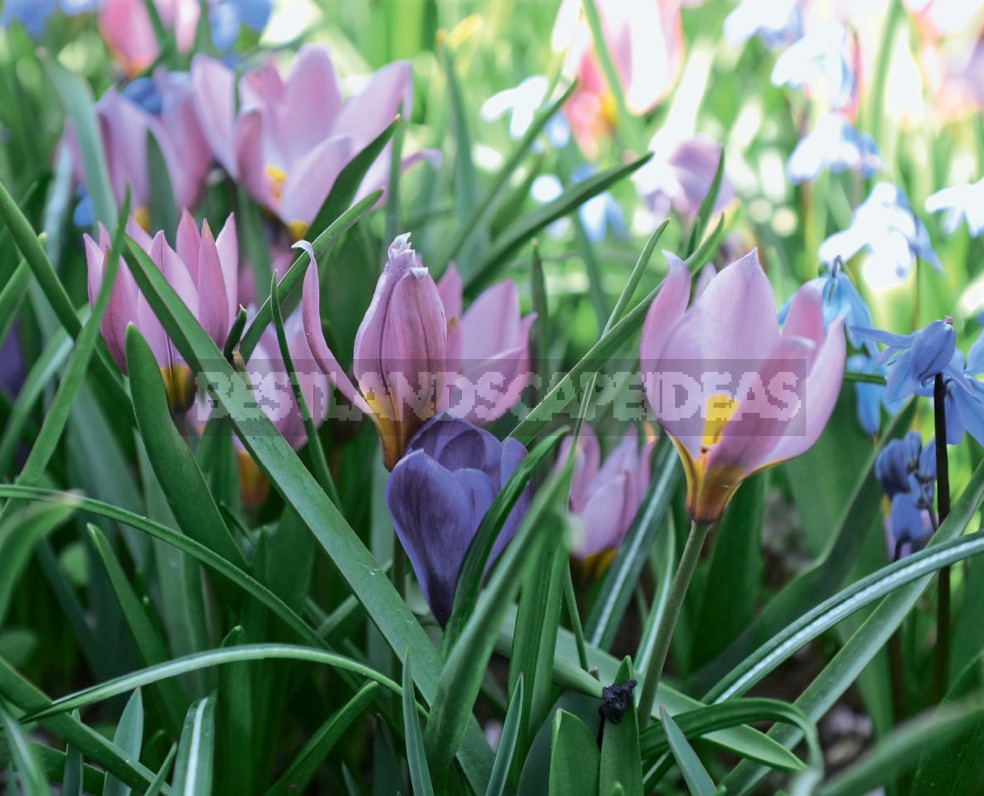
Crocuses will also decorate the southern slope of the rockery.
In any planting, they will look best in groups and arrays, these are excellent placeholders for empty space in spring flower beds.
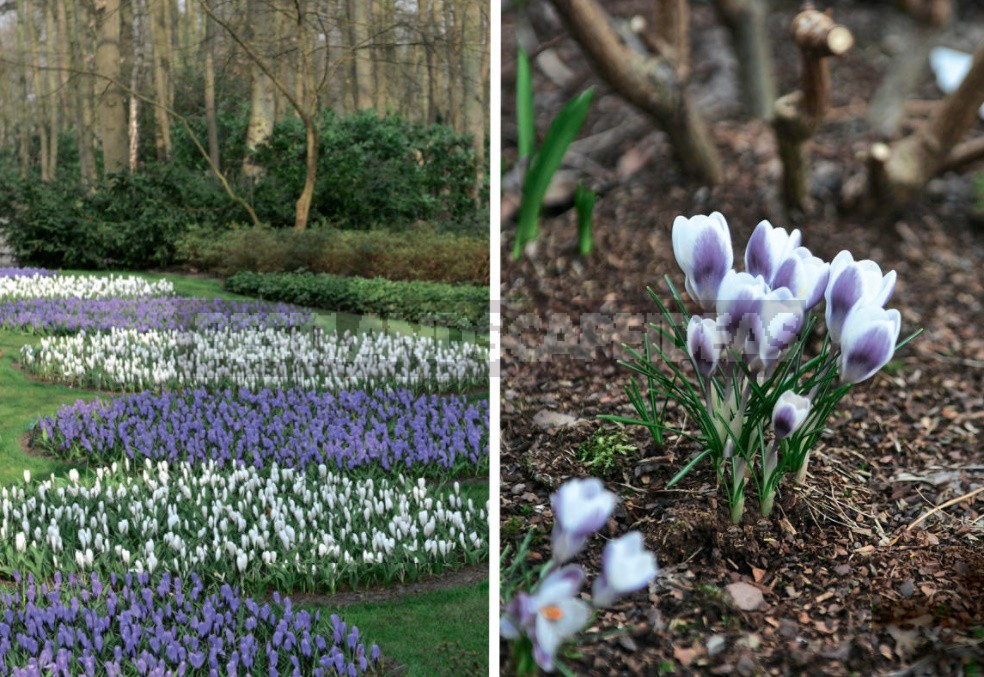
It should be borne in mind that most groundcover plants make up serious competition for crocuses, as a result of which the latter quickly disappear. However, with small-scale plants, for example, with low thyme, crocuses will quite get along.
